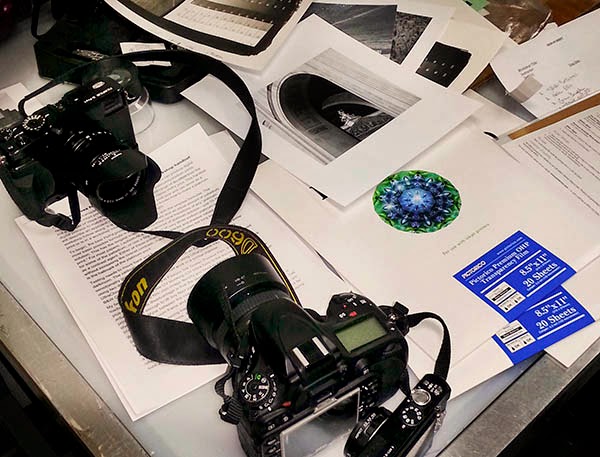CAP has workshops in kallitype, albumen, cyanotype, Van Dyke brown printing, gum bichromate, wet plate, with some courses partnered through ICP (International Center for Photography). It also has its own tintype studio on the premises at 36 East 30th Street, New York.
Carl Weese. Platinum/palladium is a contact printing process so the negative must be the same size as the final print. To achieve this a negative can be made from a digital camera file or scanned from an original film negative, scaled to size in Photoshop, and printed on a digital printer. This is the process being used to make my platinum prints.
I used to use digital images taken with a Nikon D800 because of its high resolution, but after some experimentation I have found prints made from the smaller-sized, 16bit sensor of Fuji X-cameras, such as the X-Pro1, X-E2, and new X-T1, seem to deliver an image that more closely matches the quality I used to achieve from 6x6cm film negatives. I think the reason for this is that the D800 files deliver almost too much resolution, whereas the Fuji files introduce a bit of graininess more like film. Whatever the reason, I have had a much easier time and better results since I began transferring Fuji-X digital images to platinum prints.
Platinum prints are known for their superior, extensive tonal range. The process was invented in the 1870s and has qualities never surpassed by later methods. As Weese says, "Silver prints, and now digital prints, can be very, very good, but neither can actually duplicate the tone, surface, and color of a well-made platinum/palladium print." The Platinum/Palladium printing is done on archival graphic media, usually watercolor paper, and with the Pt/Pd embedded right in the paper it produces the most permanently stable results.
Below are some photos from the workshop showing some of the progressive steps in making a print.
 |
The digital negative for platinum printing is printed on a transparent medium, such as Pictorico Ultra Premium OHP Transparency Film shown in this photo. We used an Epson 3880 printer to create the final negative. The X-Pro1 I used for my week end project is shown in the upper left of the picture. |
 |
Water color paper cut down from larger sheets is marked out with an outline of the actual printing size. |
 |
The mixture of platinum and palladium plus any additives is medewinared out in drops sufficient to coat the chosen paper size. |
 |
Next comes the wet development process. Here Carl is pouring the developer over the exposed paper. Results are immediate. |
Penumbra Foundation anytime you are in New York. As they like to point out, the foundation is located right around the corner from where the famous 291 Gallery created by Alfred Stieglitz was housed on Fifth Avenue.
Further information and details for the Penumbra Foundation and Center for Alternative Processes (CAP):
Address: 36 East 30th Street, New York, NY 10016
Phone: 917-288-0343
Email: info@capworkshops.org
Website: http://capworkshops.org/
Office Hours: Monday to Friday 10:00am to 6:00pm






Tidak ada komentar:
Posting Komentar